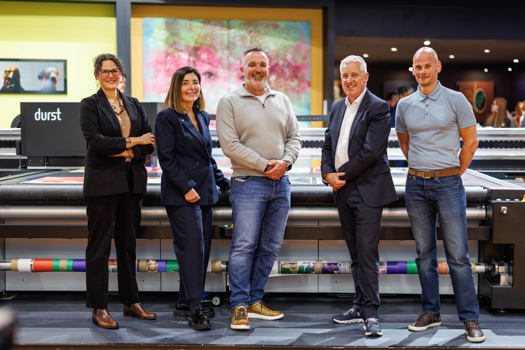President and CEO Annica Bresky said the business aimed to aims to be “a leading actor” in driving the transformation towards a bio-based circular economy.
“As a renewable materials company, our core business is about offering solutions to sustainability challenges. To balance staying within planetary boundaries and securing economic and social progress, the world needs a transformation away from fossil dependency and a linear economy,” she stated.
“We will be transparent with our progress, taking a science-based approach, to offer regenerative solutions that not only mitigate environmental impact, but restore and rebuild.”
As well as the commitment to becoming “net positive” in respect to climate, circularity and biodiversity by 2050, the group has also set new sustainability targets for the end of this decade.
“With its updated science-based targets, Stora Enso commits to reducing absolute scope 1 and 2 greenhouse gas (GHG) emissions from operations by 50% by 2030 from the 2019 base-year, aligned with the 1.5-degree scenario. Stora Enso also commits to an ambitious target to reduce scope 3 GHG emissions by 50% by 2030 from the 2019 base-year,” Stora Enso noted.
The €97m (£82m) investment at Skoghall in Sweden follows a feasibility study that began at the end of last year, and could also have involved more than doubling pulp production at the site in Sweden. However, based on the results of the study, the pulp expansion is not going ahead.
The Skoghall expansion will involve “debottlenecking” one of its existing production lines, and will increase packaging board production by some 100,000 tonnes, taking capacity to more than 900,000 tonnes.
The mill makes consumer packaging board for liquid packaging and dry food packaging.
The work will be carried out in two parts, during scheduled maintenance stops.
Stora Enso has also begun a pre-feasibility project to convert the second, currently idle, paper machine at its Oulu mill in Finland into another packaging board line.
Oulu used to make Lumi coated woodfree paper and its conversion marked Stora Enso’s exit from that part of the paper market.
The mill began making kraftliner packaging board at the beginning of this year.
Its pulp mill and drying machine were modified to produce unbleached brown pulp. Currently Oulu’s annual potential capacity is 450,000 tonnes of kraftliner and 550,000 tonnes of pulp.
Stora Enso commented: “The first conversion ramp-up in Oulu has proceeded ahead of plan since production started at the beginning of the year. A second conversion would further improve the Oulu site’s flexibility and competitiveness, through integrated pulp availability, additional fixed and variable cost savings, and ability to utilise the adjacent deep-sea harbour.”
The pre-feasibility study is expected to be completed early next year.
Stora Enso has also just announced its Q3 results. Sales in the three months to 30 September were up nearly 24% at €2.57bn “due to higher prices and deliveries”, while operational EBIT rose from €175m to €410m.
For the first nine months of the year sales were €7.44bn (2020: €6.4bn), with operational EBIT more than doubling to €1.1bn.










